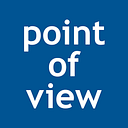Change for the Greater Good: Aligning the Team - Alexandra Morehouse

It’s been said that environmental, social, and governance (ESG) investment is the defining challenge of our time and will require wide-sweeping change across industries. At the center of every ESG program is effective change management, a perspective that helps stakeholders embrace rather than resist change — and successfully navigate the journey into an equitable as well as prosperous future.
We’re in an ongoing conversation with Alexandra Morehouse, a mission-driven collaborator and experienced board member who has a track record of successfully creating and implementing change management strategies, particularly around digital transformation and DEI.
Alexandra, implementing ESG strategies often means implementing big changes. Many people don’t welcome change. Where do you start, and how do you get people aligned to pursue the ‘right’ goals?
It’s true; few are comfortable with change. As the saying goes, “I think change is great except when it’s happening to me.”
With ESG, it’s important to start the conversation outside of the boardroom with your management team. Begin by defining what the term ESG means to your key operating leaders and what’s included under each letter of the equation. The ESG acronym is well known inside boardrooms, but largely unknown outside of that setting.
Then, work across teams get to the heart of who you are as an organization. The corporate vision can often be a good place to start. Ask yourself the essential questions. How will you align your existing corporate mission with the imperatives of a wider world? What will you report to show progress toward more global environmental and social justice goals?
Show stakeholders — from investors to business partners, customers to employees — how a commitment to ESG is good for business. Make sure they share the same vision for your company’s positive impact on the environment; pursuit of equity, inclusion, and diversity goals; and commitment to a governance structure that will lead to effective decision-making.
Meet your stakeholders where they are, with a focus on their particular sphere of influence. Start from a place of not looking for deficiencies. Appreciate what’s already been done yet inquire about what could be done differently. Draw out their thinking. Ask questions that open doors to new possibilities — for example, in reducing waste, engaging recruiters who specialize in outreach to minority candidates, and building a more diverse board.
I sit on the board of directors of an industry group, the Association of National Advertisers (ANA), composed of many well-known corporate brands. ANA has a separate organization focused solely on diversity and inclusion, called the Association for Inclusive and Multicultural Marketing (AIMM), serving 60 of the Fortune 100 companies; I’m a founding board member of AIMM. Our approach is to call on the Fortune 500 brands — respectfully, in unity, with no hidden agendas — to join us in small steps. For example, standing up against hate speech. We recently took out a full-page ad in the New York Times with a simple message: Let’s not say hateful things online.
Again, change doesn’t work when it’s imposed. It works when it’s invited And it needs to be deeply embedded in the day-to-day operations of a company, not legislated from the boardroom.
Thank you, Alexandra, for sharing with us your knowledge and exceptional insights.
Alexandra Morehouse is a mission-driven collaborator and seasoned board member, with deep experience in ESG, risk management, and digital transformation. She currently serves as the chief digital officer and chief marketing officer for Banner Health and is a national thought leader in diversity, equity, and inclusion.
